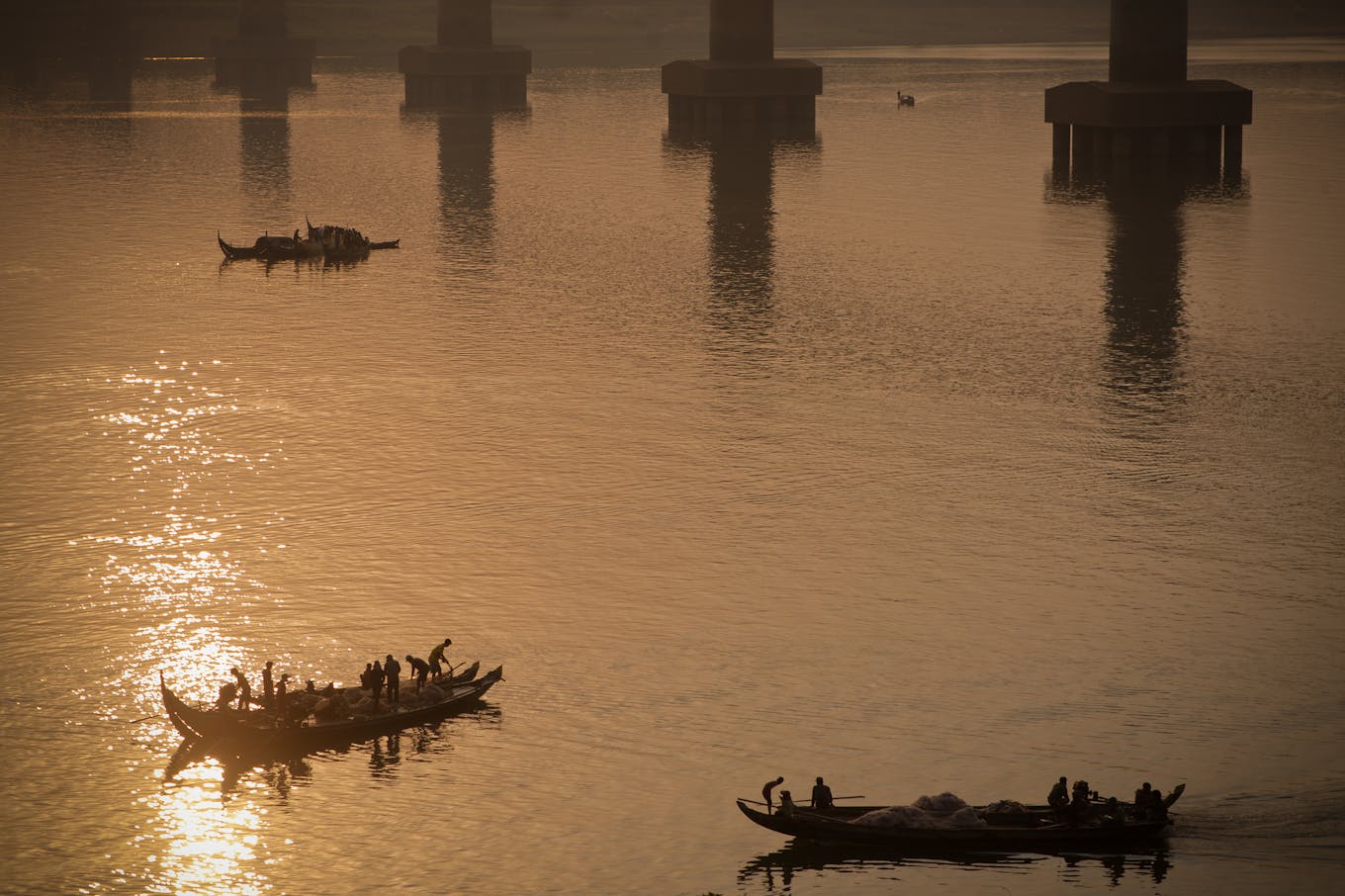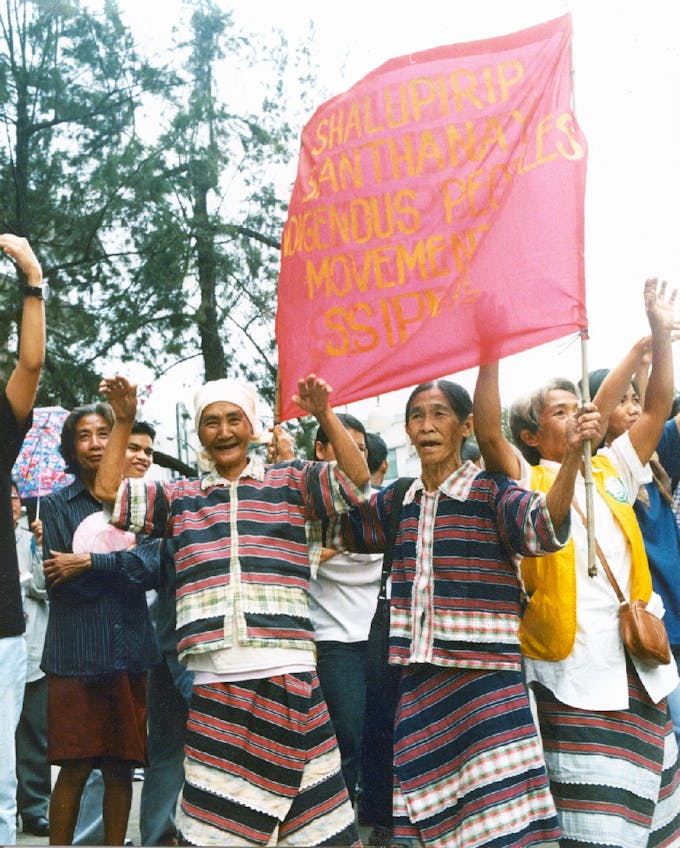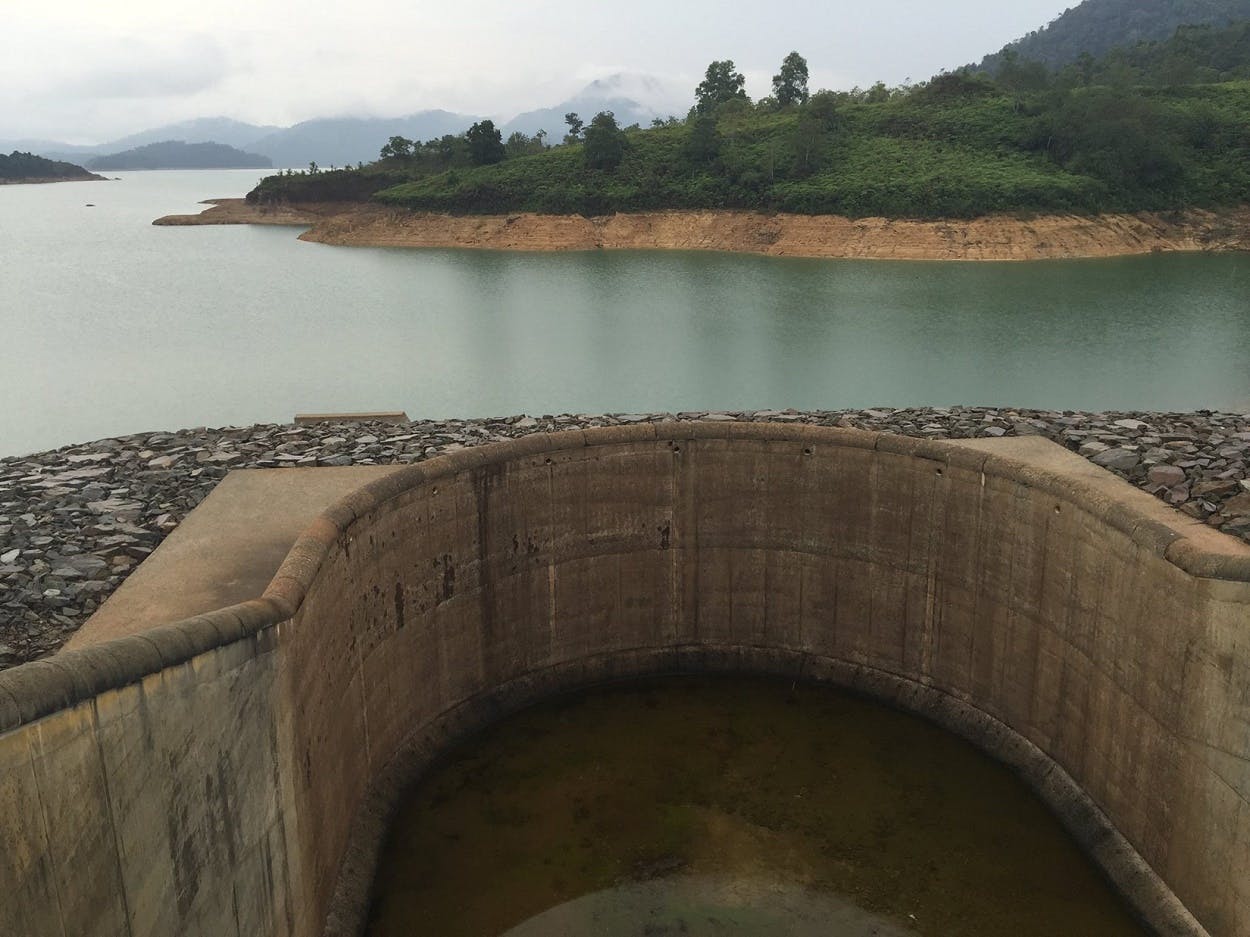A coalition of more than 300 non-profit organisations from 53 nations called on governments and international financial institutions at the COP 21 climate summit in Paris last December to scrap large hydropower dams from the list of climate initiatives that deserve any carbon credit or climate mitigation fund.
To continue reading, subscribe to Eco‑Business.
There's something for everyone. We offer a range of subscription plans.
- Access our stories and receive our Insights Weekly newsletter with the free EB Member plan.
- Unlock unlimited access to our content and archive with EB Circle.
- Publish your content with EB Premium.
Hydropower projects are accepted by the United Nations Framework Convention on Climate Change under its Clean Development Mechanism, which allows such projects to generate carbon credits.
The civil society groups, led by International Rivers, Oxfam International, Asia Indigenous Peoples Pact, Carbon Market Watch and Rivers Without Boundaries, outlined in a Manifesto the 10 reasons large hydropower dams should not be considered a solution to fight climate change.
Apart from the huge investments needed for the construction of dams, the groups cited the destruction of rivers and the massive amounts of methane emissions as reasons for their stance.
“At least 12 governments with major hydropower sectors have included an expansion of hydropower generation in their reports on Intended Nationally Determined Contributions (INDCs),” the coalition noted in a statement.
Some of these countries include China, India, Laos, Myanmar, Japan, Canada, Turkey, Argentina, Ecuador, Uganda and Ethiopia.
Massive investments, mega plans
For decades, many communities and environmentalists have questioned the sustainability of large dams. Yet today, these mega-structures are sprouting up around the world with more than 3,700 hydropower dams under construction or in the planning stage.
In the last 10 years, the global capacity of hydropower plants has increased by 27 per cent, an average of 3 per cent per year, said the World Energy Council (WEC), a London-based energy alliance group, in a report in May last year.
Hydropower provides 76 per cent of electricity generated from renewable sources worldwide, said WEC.
Financing the construction of dams is provided by development banks such as the World Bank and the Asian Development Bank. The ADB, for example, invested a total of US$762.5 million in hydropower projects in 2014.
About US$45 billion was invested in large hydropower projects worldwide in 2010 and investment analysts say this figure could reach US$75 billion by 2020.
In Asia, large dams are already rising like fortresses across the region - from the Tibetan Plateau to the Mekong - with investments flowing from Japanese and Korean banks, and more recently, Chinese and South-east Asian private investors.
China, the world’s largest builder of dams and also the world’s biggest emitter of carbon dioxide, is increasingly relying on hydropower to meet its energy needs as it moves away from coal.
It is planning some 84 more major dams along its rivers and its latest project - the US$5.8 billion Shuangjiankou dam, which started construction in July - is set to take over the ‘world’s tallest dam’ title from the 305-metre JinPing-1 dam in Sichuan, China. Shuangjiankou is expected to reach as high as 314 metres.
The same is happening in the Himalayan regions of India and Nepal, with as many as 168 mega projects proposed along the Brahmaputra valley.
The Philippines, which aims to rely only on renewables by 2030, is also betting on hydropower to contribute about a third of its total energy target by that period.
Along the Mekong, Laos, which has ambitious plans to become the “battery of Asia”, is hoping to develop more than 60 hydropower plants to supply 7,000MW to Thailand, 5,000MW to Vietnam and 1,500MW to Cambodia by 2020. So far, about 12 large hydro projects are in the pipeline.

Fishermen at Kampong Cham, Cambodia. The Mekong River and its tributaries are a major source of food and livelihood for many Cambodians. Image: Paulo Philippidis/ Flickr
Meanwhile, Cambodia is also expecting hydropower to meet more than 75 per cent of its energy needs by 2030; and Myanmar is relying on it even more heavily, to provide 98 per cent of its electricity by the same time.
Yet amid such huge investments, there is an increasing body of research questioning the economic value of dams. Researchers at Oxford University, for instance, found in a study published in 2014 that actual construction costs of large dams were too high to yield a positive return.
This trend - observed from 1934 to 2007 - has not improved over time, according to their study on 245 large dams from 65 countries.
Could it be that governments are missing lessons from the past and recent experiences of many communities where dams failed to deliver its promises?
Vulnerable Asia
When South-east Asia’s largest dam, the San Roque Multipurpose Dam, opened in 2003, it promised to provide gigawatts of electricity, irrigate hectares of agricultural land and control the perennial flooding afflicting central Luzon in the Philippines for decades.
Situated along the Agno River, 216 kilometres north of Metro Manila, the 200-metre-high mega-structure holds as much as 835 million cubic metres of water - equivalent to 334,000 Olympic-size swimming pools.
With such capacity, the San Roque dam has helped power up Luzon, contributing about 1,000 gigawatt-hours annually and irrigating about 21,000 hectares of farmlands in Pangasinan province, says the San Roque Power Corporation in its 2014 Sustainability Report.
However, for many years after it was built, nearby communities still had to endure flooding every time a strong monsoon or typhoon hits the region, destroying thousands of hectares of the very same farmlands it irrigates and even homes and lives.
Last year, strong typhoons in August and another in October inundated many towns and cities close to San Roque as dam operators had to release water after the flow reached critical levels. It was a necessary precaution to avoid the more catastrophic impact of a dam failure.
With extreme weather events becoming more frequent due to climate change, people are left to question: Is their situation an act of nature that they have to live with or a flawed engineering system that must be corrected?
San Roque is the third dam to be built along the Agno River. Two other dams built upstream as far back as the 1950s – the Ambuklao and Binga dams – also did not live up to their promise to control floods in the area.
Meanwhile, along the Mekong, thousands of communities have been protesting for years the construction of dams in Laos, Thailand, Cambodia, Myanmar and Vietnam. They say that these dams are threatening the Mekong River ecosystem - their main source of food, livelihood and water.
Ame Trandem, the South-east Asia programme director for non-profit group International Rivers, tells Eco-Business that hydropower dam development is compounding the impacts of climate change in the Mekong River Basin.
“Communities which depend on the rivers for their survival have been particularly hard hit,” she adds. The hydrological changes in the Mekong has led to a decrease in fishing stock, more river bank erosion and changes in water quality and temperature, she explains.
Laos’ highly-disputed Xayaburi and Don Sahong dams have also become the centre of a transboundary disagreement with Cambodia, Thailand and Vietnam. These countries have asked Laos to conduct a comprehensive assessment of the dam’s environmental effects beyond its borders before it proceeds with the projects.
Hidden emissions
Greenhouse gas emissions from hydropower is also a controversial issue that remains unresolved.
Advocates flaunt hydropower plants, which similarly operates with coal power plants by powering up turbines, as emissions-free generators. Coal, on the other hand, is the biggest polluter in the energy sector.
“
If national commitments to reduce GHG emissions do not consider the impact of hydropower located in tropical countries - where it is now a booming sector - then UNFCCC’s negotiations will fail to achieve its target of limiting global warming to below the 2 degrees Celsius threshold
Philip Fearnside, professor and researcher, Instituto Nacional de Pesquisas da Amazônia in Manaus
Industry group International Hydropower Association (IHA) says large dams are good at storing energy and hence can play an important role in ensuring the stability of power grids that also have other renewable sources such as wind and solar energy, which tend to be more intermittent.
Stored water in dams - when released - can produce electricity to supply to the grid at any time to fill the gap left by other renewables in instances when the “wind stops blowing or the sun’s energy is interrupted”, notes IHA in its 2015 Hydropower Status Report released in May 2015.
IHA downplays criticism that dam reservoirs generate excessive methane emissions and argues that pre-existing carbon emissions in dam locations as well as other human activities not related to dams should not be calculated in a project’s carbon footprint.
Ecology researchers such as Philip Fearnside of Instituto Nacional de Pesquisas da Amazônia in Manaus, Brazil, disagree.
He says that the carbon footprint of dams has not been fully studied. His research published in June 2015 in the journal Environmental Science & Policy points out the under-accounting of the climate impact of dams.
Professor Fearnside argues that the Intergovernmental Panel on Climate Change – a UN body that reviews scientific and socio-economic information relevant to climate change - has not included in its inventories the GHG emissions of hydroelectric dams in tropical regions, where reservoirs such as those in the Mekong and the Amazon emit more methane than those in temperate zones.
The true amount of emissions is not reflected because factors such as turbines, the decaying of trees surrounding the reservoirs and underestimated methane concentrations in tropical forests compared with low vegetation areas in higher regions are not taken into account, he explains in the study.
GHGs from hydroelectric dams are released from the stratification of reservoir water, when anoxic water or water that has little oxygen stays at the bottom of reservoirs along with other organic matter, which then forms methane that eventually bubbles its way up to the atmosphere.
A new study by French researchers on Laos’ Nam Theun 2 reservoir confirmed Fearnside’s study, saying the dry season caused the rise in methane emissions around the Laos dam.
A previous study by Singapore researchers in 2012 also shows that GHG emissions from reservoirs are underestimated.
If national commitments to reduce GHG emissions do not consider the impact of hydropower located in tropical countries - where it is now a booming sector - then UNFCCC’s negotiations will fail to achieve its target of limiting global warming to below the 2 degrees Celsius threshold, notes Professor Fernside’s study.
Can dams ever be sustainable?
Campaigns against large dams worldwide since the 1970s have led to the formation of the World Commission on Dams in 1998, which undertook an independent review of the world’s largest dams. In a new framework it proposed in 2000, it said that dams should first gain public acceptance and that other ways of securing water and energy should be explored first.
The London-based IHA has also been advancing the Hydropower Sustainability Assessment Protocol, a voluntary standards tool it created in 2011 to help developers audit the sustainability of their projects.
ADB, as an investor, says it conducts due diligence for hydropower projects and has started including climate risk assessment in its projects in 2014.
Nessim Ahmad, the deputy director general at ADB’s Sustainable Development and Climate Change Department, tells Eco-Business that all infrastructure projects, including hydropower dams, follow its Safeguard Policy Statement (SPS) to ensure they are socially inclusive and environmentally sustainable.

The Co Tu ethnic community duing a meeting with ADB. Image: ADB
SPS, which was started in 2009, addresses the environmental impact of projects, resettlement of affected communities and the rights of indigenous people.
Resettlement of affected communities, for example, is one of the most challenging components of a hydropower project, Nessim admits, adding that it can be a traumatic experience for communities if not managed well.
Resettlement schemes “should provide ‘land for land’ compensation rather than cash payments wherever possible” and make sure that communities have livelihood options “not worse off” than before the project, notes Nessim.
He cites the success of ADB-funded Song Bung 4 hydropower project in Vietnam, which engaged with the Co Tu ethnic group early in the project’s development and gained the community’s approval.
“Livelihood and benefit sharing programmes were developed that included payment to the villagers to patrol the surrounding forests and protect them against illegal logging and poaching,” explains Nessim.
However, this is not always the case for other dams. Experts say dams continue to result in devastating environmental and social consequences.
Rights to rivers
Jill Cariño, 56, who belongs to the indigenous Ibaloi in Baguio City, recounts to Eco-Business how the San Roque dam devastated local communities and displaced them from their ancestral lands.
The 1956 Ambuklao dam at Benguet submerged an old Ibaloi settlement of 200 families and 500 ha of agricultural land. The Binga – completed in 1960 - flooded 150 ha of farmlands belonging to 100 families.
“Relocation of the displaced Ibaloi families was promised only in 1975, 20 years after the Ambuklao dam was built, when it became a priority to clear the Agno River watershed of its occupants,” says Cariño.
The executive director and convenor of the Philippine Task Force for Indigenous Peoples’ Rights (TFIP), an alliance of NGOs helping indigenous groups, has spent her life campaigning for local community rights for those displaced by dams and mining.

Ibaloi women dancing at a protest march against the construction of San Roque dam. Image: International Rivers via Flickr
“Many Ambuklao and Binga residents still continue to live and farm in the dams’ watershed areas, yet they are under the ever-present threat of being prosecuted as illegal occupants of land that was originally theirs,” she shares.
In San Roque, more than 4,400 indigenous groups had been displaced from their ancestral lands because of the dam’s construction, notes grassroots organisation Cordillera People’s Organisation.
The San Roque dam is just one of many in South-east Asia which has caused irreversible harm to rivers and people who depend on them for their livelihoods.
At present, a proposed US$238.6 million Jalaur mega-dam project in the Philippines’ Panay island threatens to displace 17,000 indigenous people called the Tumandoks, who are protesting against the construction.
“It seems they refuse to learn the lessons from the follies of the past,” says Cariño from the Philippines’ TFIP.
She notes that industry-based auditing tools and other sustainability measures are not practised by developers in the Philippines.
“While there may exist higher industry standards at the international level, the practice that we see in the Philippines is that the companies only comply with the minimum legal requirements for FPIC (free prior and informed consent) and environmental compliance,” she says.
These processes are often not properly carried out, so companies can rush through the project and earn profits at the expense of the affected communities, she adds.
Assessing the future
Experts say unpredictable weather conditions – from extreme drought to heavy flooding – will pose further economic and environmental risks to hydropower projects.
ADB’s Nessim says it addresses such risks through a climate risk management framework.
Bhutan’s 118 MW Nikachu hydropower project, approved in December 2014, is one example. ADB says the project complies with ADB’s SPS and various climate change modeling analyses, which show that there is long-term water flow to the Nikachu watershed.
Nikachu has sufficient water and will have a “positive climate change impact under the CDM, eliminating 459,734 tonnes of potential CO2 emissions”, ADB states in the dam’s project report.
Many existing dams, however, are uncertain about their future.
International Rivers’ Trandem says that the changing climate has already affected dams and reservoirs across Asia.
During droughts, energy production is often disrupted as many dams simply lack water to generate at full capacity, she notes.

Climate spell? The Johor reservoir in Malaysia has dipped below over 50 per cent in 2015 due to dry spell. Image: PUB
In Cambodia, Prime Minister Hun Sen has even said the country will have to off-set the lack of energy generation from dams during the dry season with the construction of more coal-fired plants, she says.
In Nepal, hydropower companies are also feeling the impact of low river flow and extreme weather conditions. Elsewhere around the world, including California in the United States and parts of Brazil, hydropower operations are threatened by drought.
Trandem says: “Governments and companies around the world have in general lacked the willingness to genuinely address the problems of large dams as a major threat to world’s riverine ecosystems and the communities that depend on them.”
Building large dams is simply wrong amid a changing climate, she comments, and adds that maintaining “healthy river systems are the key to climate change resilience as they are the best systems available to deal with increased flooding and droughts and store, filter, and distribute water”.
Cariño concurs, highlighting that protecting rivers are ingrained in indigenous peoples’s worldview and practices, and their sustainable natural resource management should instead be strengthened and used as models in caring for the planet.
“Indigenous lifestyles contribute the least to climate change. Theirs are the one that can show the way forward in addressing the climate and environmental crisis,” says Cariño.




